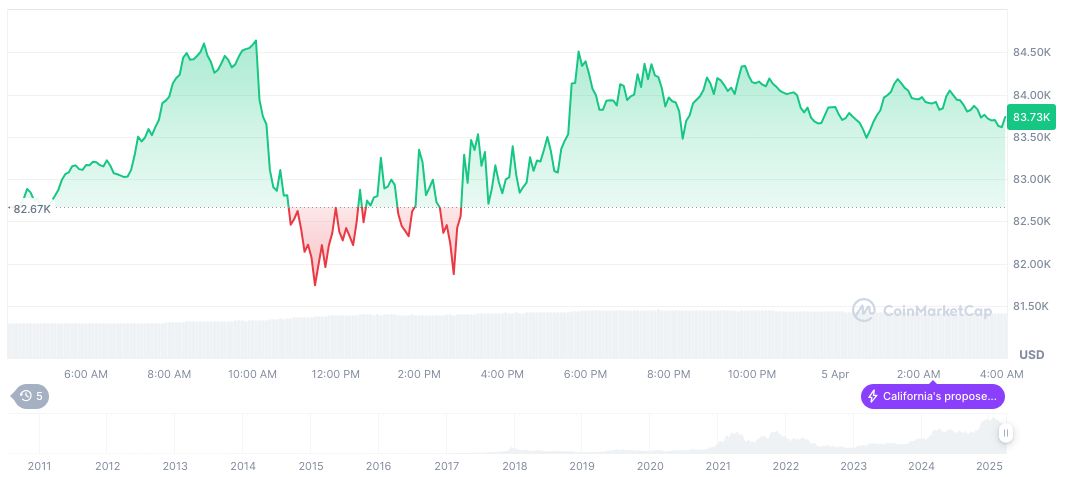- Arthur Hayes suggests Bitcoin’s independence from Nasdaq due to tariffs.
- Bitcoin could become a hedge against fiat currency issues.
- Market reactions to tariff policies are causing mixed sentiments.
Arthur Hayes, former BitMEX CEO, tweeted on April 5 suggesting Bitcoin holders should embrace tariff policies, potentially breaking Bitcoin’s correlation with Nasdaq as a warning signal for fiat liquidity.
This position could shift Bitcoin’s role in economic markets, reinforcing its value as a hedge against traditional fiat volatility driven by tariff-related monetary policies.
Bitcoin as a Protective Asset Against Fiat Volatility
Arthur Hayes, known for his macroeconomic insights, recently indicated that Bitcoin holders should acclimate to tariff policies. He proposed Bitcoin’s potential shift away from its previous association with Nasdaq, likening it to the “purest smoke alarm” for fiat liquidity. Hayes’s insight comes amidst fluctuating economic policies that could affect global markets.
The changes in market dynamics due to tariffs may weaken the U.S. dollar, resulting in increased money printing. Hayes argues these actions benefit Bitcoin as a viable store of value. The implications could extend to gold as an alternative fiscal-safe asset, promoting further adoption and solidifying its role as a financial hedge.
Market reactions to Hayes’s statements have been varied. Some analysts align with his perspective, while others caution against heightened volatility. Twitter discussions reflect mixed sentiments among investors regarding Bitcoin’s volatility amidst macroeconomic uncertainties. Hayes’s insights continue influencing market perceptions and global responses to monetary policies.
Bitcoin Price Trends Amid Tariff-Linked Market Shifts
Did you know? Bitcoin’s potential shift from a tech-oriented correlation to a macroeconomic hedge reflects past trends where cryptocurrencies increasingly acted as financial diversity tools during economic uncertainty.
On April 5, 2025, Bitcoin (BTC) traded at $82,976.18 with a market cap of $1.65 trillion according to CoinMarketCap. Its market dominance was 61.95% amid trading volumes of $16.68 billion, reflecting a 24-hour shift of -1.15%. The broader 60-day trend shows a decrease of 16.46%.

Expert insights reveal that tariffs may prompt adjustments in monetary policies, enhancing Bitcoin’s hedging appeal as liquidity changes occur. Regulatory shifts signaled by the Fed introduce potential market impacts, reinforcing Bitcoin’s positioning amid financial and technological transitions.























